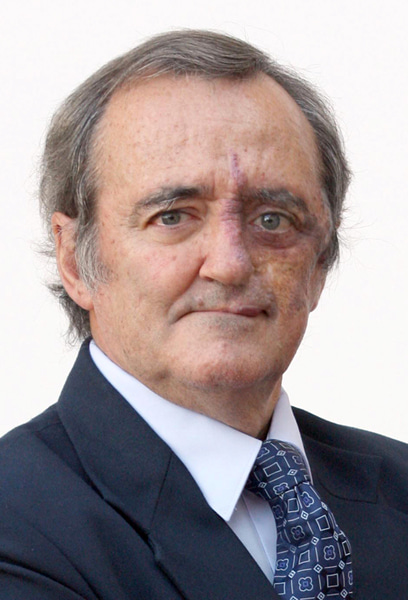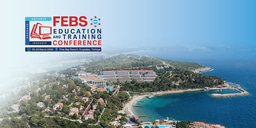Mariano Barbacid: "Exchanging ideas with my colleagues is one of the most enjoyable activities in research."


After a PhD from Universidad Complutense, Madrid, Spain and training as a postdoctoral fellow at the US National Cancer Institute, Mariano Barbacid started his own research group in 1978 to study the molecular events responsible for the development of human tumors. His work led in 1982 to the isolation of the first human oncogene, HRAS, and the identification of the first mutation associated with the development of human cancer. These findings, also made independently by two other groups, have been seminal to establish the molecular bases of human cancer. He is also credited with the isolation of the TRK oncogene from a colon carcinoma in 1991, now the paradigm of agnostic tumors. In 1988, he joined Bristol Myers-Squibb where he became Vice President, Oncology Drug Discovery. In 1998, he returned to Madrid to create and direct the Spanish National Cancer Research Center (CNIO). In 2011, he stepped down as CNIO Director to focus on his long-standing interests in identifying therapeutic strategies against KRAS mutant tumors, a mutation involved in more than 20% of all human cancers. Mariano was inducted to the US National Academy of Sciences in 2012 and in 2014 he was elected Fellow of the Academy of the American Association for Cancer Research. His work has been recognized by several domestic and international awards including the Steiner Prize (Bern, 1988), Ipsen Prize (Paris, 1994), Brupbaher Cancer Research Prize (Zurich, 2005), the Medal of Honor of the International Agency for Cancer Research (Lyon, 2007) and the Burkitt Medal (Dublin, 2017). In 2011, he received an Endowed Chair from the AXA Research Fund (Paris). Currently his Hirsch "h" factor is 122.
What drew you to your research field?
The challenge. Understanding and targeting cancer is one of the main challenges in our society today.
Tell us about one of your favourite published papers from your lab
I would highlight the series of papers published back in 1982 describing the isolation and mechanism of activation of the first human oncogenes.
1982 was designated by the journal Nature as 'The Year of the Oncogene'. That year saw the publication of a series of papers by three independent research groups in the USA: those led by Robert Weinberg at MIT and by Mike Wigler at Cold Spring Harbor, and my own, at the National Cancer Institute. The first publications described the isolation of a transforming gene (oncogene) from two human tumor cell lines derived from bladder tumors, EJ and T24, which later were shown to be the same cell lines. Just two months later, this oncogene, which obviously turned out to be the same in the three laboratories, was shown to be a transforming allele of HRAS, an oncogene originally isolated back in 1964 from a rat sarcoma as a retroviral oncogene. At that time, Channing Der, then working in the laboratory of Geffrey Cooper, identified another transforming gene (isolated by Genentech scientists the following year) as an allele of KRAS. Then in November, the group of Robert Weinberg, in collaboration with Ed Scolnick and Doug Lowy, and my own in collaboration with Prem Reddy described that the oncogenic properties of HRAS were due to a single amino acid substitution. This observation was also made by the group of Mike Wigler and published a few weeks later. The simplicity of this mechanism made several scientists question whether HRAS was a 'bona fide' human oncogene. This issue came to an end when a month later, in December of 1982, we reported the identification of five different human oncogenes including HRAS and KRAS from surgically removed human solid tumors.
What do you see as the most important developments in the field of KRAS cancers in the past decade?
Undoubtedly, this is the demonstration by Kevan Shokat and co-workers that KRAS is no longer undruggable [Ostrem, J.M. et al. (2013) Nature 28, 548–551. doi: 10.1038/nature12796], an observation that has made possible, almost 40 years after their discovery, the targeting of KRAS oncoproteins in the clinic.
The three-dimensional structure of KRAS had been known for decades. Yet, nobody was able to identify structural vulnerabilities to design inhibitors capable of deactivating oncogenic RAS. We need to keep in mind that the proteins encoded by RAS oncogenes, despite being “activated” molecules, biochemically speaking are dead enzymes. The amino acid substitutions that make RAS proteins oncogenic inhibit its intrinsic GTPase activity, essential for its deactivation in a physiological context. Shokat and co-workers found a previously undetected pocket underneath the switch II region essential for binding to a downstream effector. Interestingly, drugs capable of binding to this pocket also affect the switch I region and favour the inactive GDP-conformation. However, this strategy comes with a price. Inhibitors need to form a covalent bond with KRAS to achieve stable binding. This limits the use of these inhibitors to only one of the multiple KRAS oncogenic isoforms, KRASG12C. Yet, these discoveries have opened the door to design of a new series of inhibitors that no longer require the formation of covalent bonds, hence expanding the range of KRAS inhibitors that are likely to demonstrate their clinical benefit in the forthcoming years.
How would you sum up challenges and impacts in the wider cancer field right now?
In cancer there are two main challenges. First of all, how to target pharmacologically the 500+ cancer genes responsible for the onset and/or progression of the various cancer types. And not less challenging, how to avoid the onset of drug resistance in most current treatments.
That said, the advent of three new cancer therapies – precision oncology (also known as targeted therapies – molecular profiling of tumors to identify specific alterations that can be targeted), immunotherapy based on blocking immune checkpoint inhibitors to enhance the immune response against cancer cells, and CAR-T cells (where a patient’s own T cells are engineered to carry a chimeric antigen receptor (CAR) targeting a cancer-cell-specific antigen) – have revolutionized cancer treatment.
What’s your lab management style?
In the lab, we have three interconnected research areas. Within those areas, I let my co-workers generate their own ideas. Yet I try to stay as connected as possible. Exchanging ideas with my colleagues is one of the most enjoyable activities in research.
What do you consider your most important functions as an institute leader?
When I built the CNIO, my priority was to recruit the best possible talent, always keeping in mind that the total must be more than the sum of all the parts. Top scientists yes, “prima donnas” no.
What do you see as the key ingredients for successful research collaborations?
To respect my colleagues. Never try to appropriate ideas from other labs. And whenever possible, to propose projects of common interest. And always be willing to share our reagents and protocols with other scientists.
What do you consider to be the most important skills and areas of knowledge for cancer researchers nowadays?
Cancer is such a complex group of diseases that scientists need to have a wide variety of skills, from basic molecular biology, to bioinformatics, to use of experimental cellular and animal models – and if you are not a clinician (as in my case) to have as much knowledge of clinical issues as possible.
Introduction to Mariano Barbacid's work
Research summary
The Barbacid laboratory is interested in identifying viable therapeutic strategies against KRAS mutant pancreatic and lung adenocarcinomas, two tumor types in which there is overwhelming evidence that KRAS mutations represent the initiating cancer-triggering event. While our work has revealed that targeting certain components of KRAS signalling pathways is toxic for mice, we have identified RAF1 as an essential signaling element for KRAS/TP53-driven lung and pancreatic tumors that can be ablated without significant toxicity. We are currently engaged in two main lines of research: to identify additional non-toxic targets to increase the percentage of tumor regressions in both lung and pancreatic tumors, and to generate suitable RAF1 inhibitors capable of reproducing pharmacologically those therapeutic effects observed upon its genetic ablation. To this end, our group has succeeded in expressing RAF1 in a soluble form. This result will allow us to identify small molecules that can bind to RAF1 in order to ultimately generate PROTACs to degrade RAF1 in human tumors. The Barbacid laboratory is fully committed to translate the basic findings obtained with genetically engineered mouse tumor models to a clinical scenario that eventually will help patients suffering from KRAS mutant cancers.
Lab webpage: https://www.barbacidlab.es/
Three recent/key papers:
García-Alonso, S. et al. (2022) Structure of the RAF1-HSP90-CDC37 complex reveals the basis of RAF1 regulation. Mol. Cell 82, 3438–3452. https://doi.org/10.1016/j.molcel.2022.08.012
Blasco, M.T. et al. (2019) Complete regression of advanced pancreatic ductal adenocarcinomas upon combined inhibition of EGFR and c-RAF. Cancer Cell 35, 573–587. https://doi.org/10.1016/j.ccell.2019.03.002
Drosten, M. and Barbacid, M. (2022) Targeting KRAS mutant lung cancer: light at the end of the tunnel. Mol. Oncol. 16, 1057–1071. https://doi.org/10.1002/1878-0261.13168
More information on the Molecular Oncology plenary lecture at the 47th FEBS Congress
Mariano Barbacid will deliver the Molecular Oncology plenary lecture at the 47th FEBS Congress on Sunday 9th July 2022 on ‘Targeting KRAS mutant cancers: light at the end of the tunnel’: https://2023.febscongress.org/
Molecular Oncology is an open access journal owned by FEBS.
Top image of post: KRAS protein structure, from the website of the National Cancer Institute (https://www.cancer.gov).





Join the FEBS Network today
Joining the FEBS Network’s molecular life sciences community enables you to access special content on the site, present your profile, 'follow' contributors, 'comment' on and 'like' content, post your own content, and set up a tailored email digest for updates.